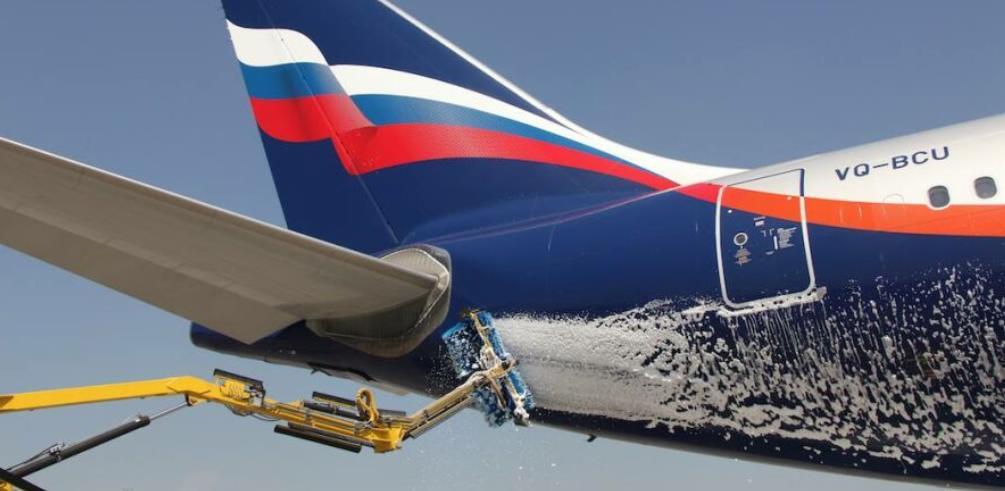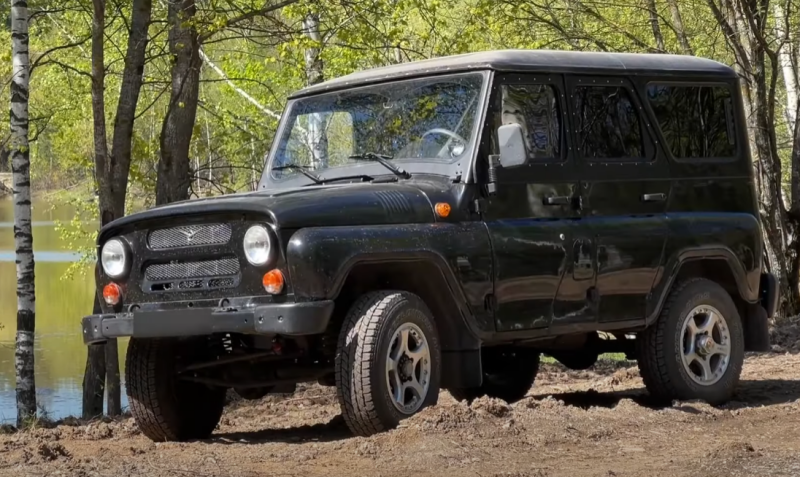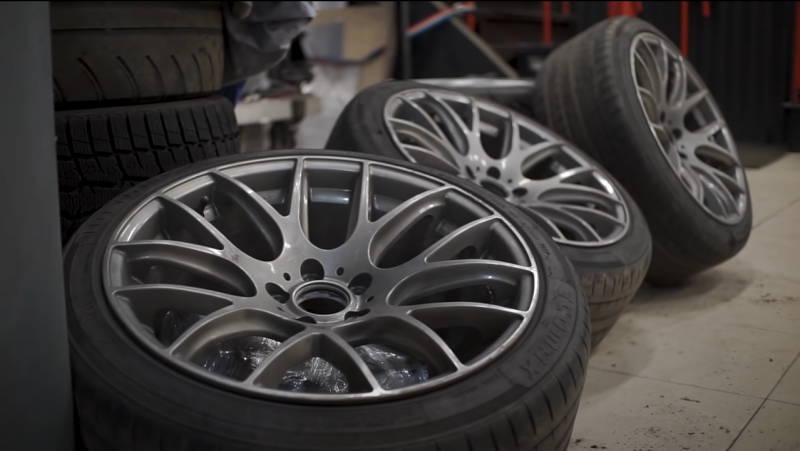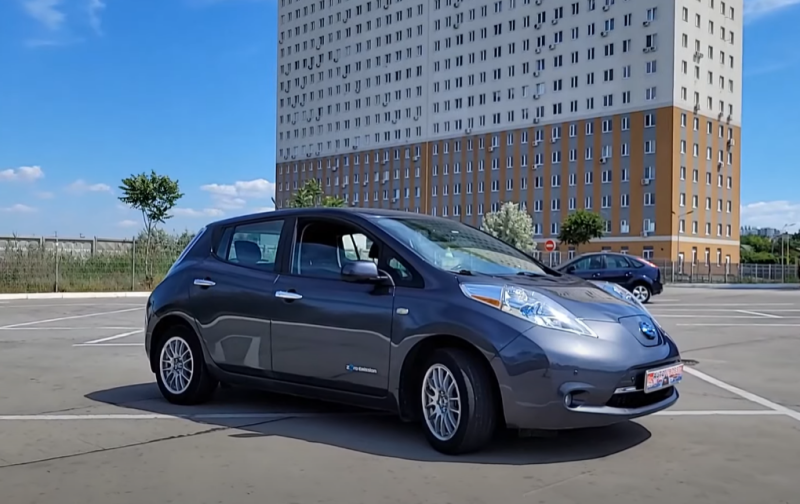And if everything is more or less clear with the cleaning of the passenger cabin - groups of cleaners carefully perform this ritual after each flight, then washing the aircraft from the outside is a process quite secretive from the layman. Yes, and the approach to solving this issue in different countries in different ways.
The simplest solution
The cheapest and least expensive option is to use unskilled labor. That is, the fuselage and wings of the aircraft are cleaned of dirt using detergents and water pressure by the most ordinary washers. They have brushes, a set of special chemicals and a high-pressure washer. To reach all parts of the fuselage, telescopic truss lifts or a manipulator with a basket in which the washer is located are often used.
 Hand washing remains the most common way to wash aircraft. Photo: YouTube.com
Hand washing remains the most common way to wash aircraft. Photo: YouTube.comWet washing of the aircraft can be carried out only if the outside air temperature is at least +5 degrees. But this does not mean that planes are not washed in cold weather. Just for processing at low temperatures, special non-freezing compounds are used.
 Removal of icing in the port of Domodedovo. Photo: YouTube.com
Removal of icing in the port of Domodedovo. Photo: YouTube.comNeedless to say, the size of modern airliners makes this task quite time-consuming and time-consuming, so one side is immediately serviced by a whole cleaning team. Work, with the exception of operators of a lift and a washing machine with a rotating synthetic bristle, does not require special training. So, the vacancy of an aircraft cleaner in Domodedovo is estimated at only 35 rubles with a shift schedule.
During the cleaning of the aircraft from dirt and dust, up to 12 tons of water is consumed - quite a lot. And if in Russia there are no regrets about this, for most countries in Africa, Asia and the Middle East this is a serious problem.
"Dry" washing by hand
In the air harbors of Arab and many other airlines, the “dry” washing technique is actively used. A special absorbent composition is applied to the body of the aircraft, after which it is removed with soft microfiber towels.
 Dry washing saves tons of fresh water. Photo: YouTube.com
Dry washing saves tons of fresh water. Photo: YouTube.comThe high-tech tool also forms a protective coating layer, similar to Teflon. As a result, pollution is formed several times slower than usual, and the schedule of cleaning procedures is reduced to 3-4 washes per year. At the same time, the cost of cleaning manipulations costs the owners of airliners an order of magnitude more expensive than at Russian airports.
 Washing an airplane with a regular mop with an extended handle Photo: YouTube.com
Washing an airplane with a regular mop with an extended handle Photo: YouTube.comThis method is excellent for aircraft with a high operational load. The advantage of "dry" washing is that the procedure can be carried out simultaneously with the maintenance of the side.
Inventions of the USSR
In 1969, an attempt was made in the Soviet Union to automate aircraft washing processes. To this end, a fully functional apparatus was invented, which even managed to visit VDNKh. Its futuristic design for those years clearly indicated where the engineering thought of that great era was directed.
 The design of the Soviet engineers was standing. Photo: YouTube.com
The design of the Soviet engineers was standing. Photo: YouTube.comHowever, the “space” aircraft washer never got into serial production - the expediency of the unit did not seem obvious. As a result, the fuselages and wings of Aeroflot continued to be scrubbed with brushes in manual mode.
 Rotating brushes do their job very well. Photo: YouTube.com
Rotating brushes do their job very well. Photo: YouTube.comCurrently, Russian airports use special installations with rotating brushes. They do not stand out in design, but with them the aircraft washing procedure proceeds much faster.
Robotic systems
In the US, Wilder Systems decided to go one step further and developed a robotic aircraft washing system. People still take part in the cleaning process, but most of their tasks come down to monitoring the execution of program algorithms.
 Robotic aircraft washing is being tested on American F-16s. Photo: YouTube.com
Robotic aircraft washing is being tested on American F-16s. Photo: YouTube.comThe Aerowash detergent is strong enough to cause skin burns. As a result, cleaning personnel work in chemical protective equipment, and the process of processing the aircraft itself stretches for a couple of days. Given the workload of passenger airlines, the development of Wilder Systems has to be trained by the US Air Force - once every six months they serve the F-16s, which are part of the experimental 149th regiment.
Stationary aircraft wash in France
Everything is completely different here. Yes, there are still places where dirt is removed from aircraft in the same way as in Russia. However, it is in France that an experimental line of stationary washing for aircraft is now being tested. The installation is located in the hangar, and after the plane is in the right place, the automatic wash gets to work.
 The most effective solution for cleaning the fuselage came up in France. Photo: YouTube.com
The most effective solution for cleaning the fuselage came up in France. Photo: YouTube.comThe system also works at low temperatures, effectively removing frost on the wings and fuselage. However, in this case, the point participation of a person is still preserved. So far, nothing better than a brush and hand washing has been invented for strong pollution.
 Closed water cycle. Photo: YouTube.com
Closed water cycle. Photo: YouTube.comBut at the same time, the hangar installation is an environmentally friendly object for the environment. The used water goes through the process of settling and subsequent purification, and then is again fed through high-pressure nozzles to the dirty aircraft bodies.
Portal car wash on the islands
In the southern latitudes for aircraft, we found a real portal car wash. The aircraft under its own power passes under a farm with nozzles, from which jets of water escape under high pressure. This system can rightfully claim the title of the fastest aircraft car wash, but there is no need to talk about any economy of water resources.

The fastest way to wash an airplane. Photo: YouTube.com
It is worth noting that it is located in Hawaii, at the airport of Barbers Point. The sink is designed to service Coast Guard aircraft. Nothing is known about whether it is possible to quickly wash passenger airliners.
Ceremonial aircraft wash FTWA
Every aircraft must go through this procedure. Fire truck water arc is arranged with the help of two fire hoses located on both sides of the runway opposite each other. The jets are directed in such a way that a water arch is formed, through which the aircraft passes under its own power.
 If the fire truck water arc causes a rainbow to appear, the board service will be lucky. Photo: YouTube.com
If the fire truck water arc causes a rainbow to appear, the board service will be lucky. Photo: YouTube.comThis ritual is considered obligatory for a board that has completed its first flight or visited a certain air harbor for the first time. This tradition migrated from the seaports and has become one of the obligatory ceremonies of modern aeronautics. Under favorable circumstances, the water arch even provokes the appearance of a rainbow over the side - a good sign, symbolizing a long and successful service.
As you can see, airplanes need regular washing no less than cars and other vehicles. A neat appearance once again emphasizes the confidence of pilots and gives passengers excellent emotions of a successful and safe flight.










